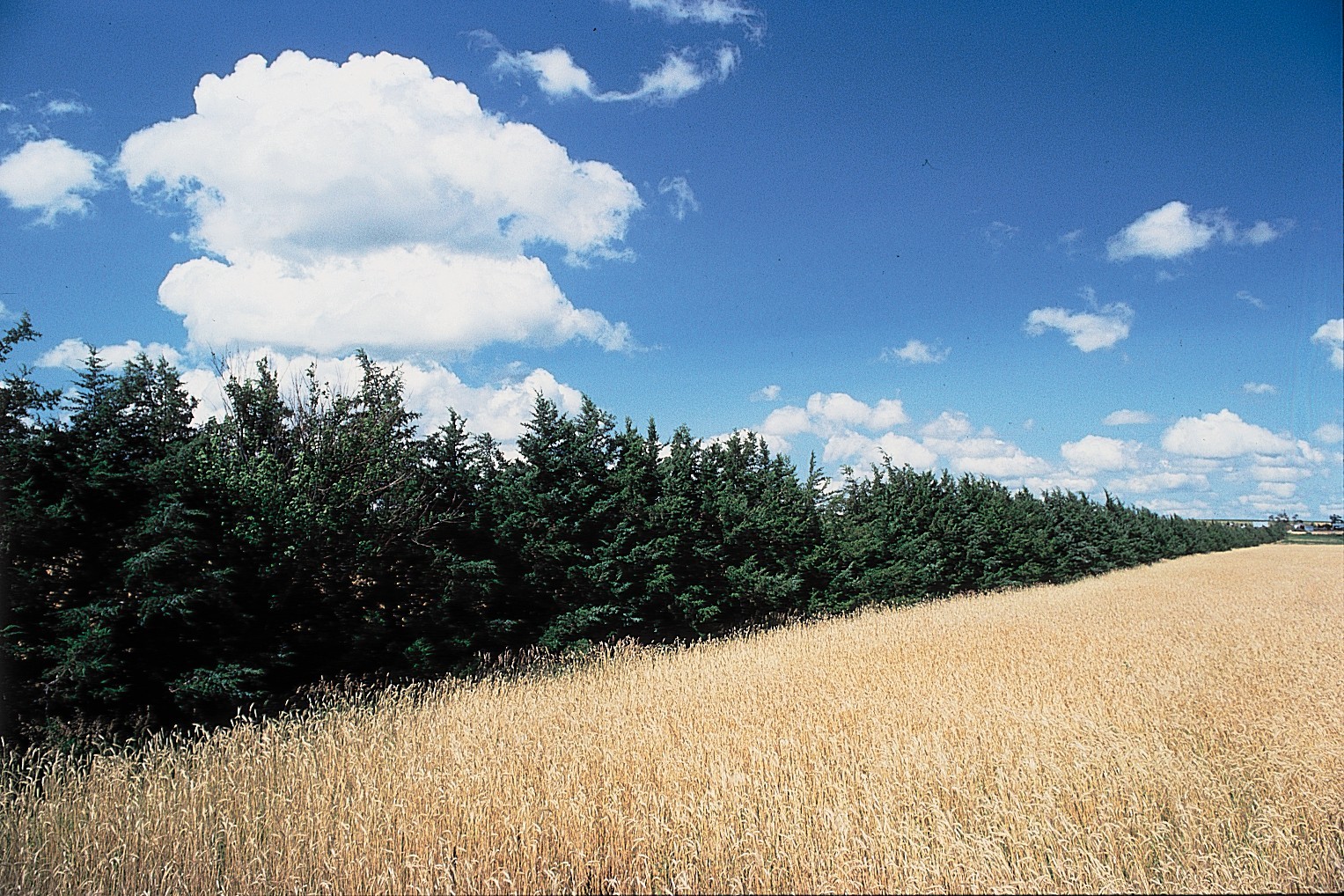Eastern Red Cedar : Cultivation: A Complicated History
The Eastern red cedar is the most widely distributed conifer of tree size in the Eastern United States, found in every State east of the 100th meridian and even in southern Canada. It prefers dry climates but can grow under varying and extreme climactic conditions ranging from rock outcrops to swampland, and from ridges to flatland plains.
Eastern red cedar roots are very fibrous, tending to spread widely, but can also deeply penetrate the soil. Therefore, Eastern red cedar is one of the best trees for protecting soils from wind erosion—a quality that helped to establish its love-hate relationship with the Great Plains region.
Following the Dustbowl of the 1930s, cedars were endorsed by the Prairie States Forest Project. These resilient survivors were widely propagated as windbreaks, or shelterbelts, due to their ability to grow to full height in tightly spaced rows, to hold soil down with their fibrous roots, and to withstand extremes of drought, heat, and cold. In Nebraska, Eastern red cedar was the “most suitable species among five combinations tested for single-row field windbreaks."
However, these good intentions have unfortunately opened a Pandora’s Box of unforeseen consequences for the prairie region today. These Dust-Bowl inspired plantings and the lack of fire to purge and renew the land have led to massive red cedar encroachment. Before European settlement, rangeland fires were common in the Great Plains due to lightning strikes and Native American burnings which reinvigorated the land. However, settlers fearing loss of life and property promoted fire suppression and, consequently, neglected healthy management of the red cedar population.
Today, the cedar “invasion” has been likened to the Dust Bowl itself in terms of ecological disturbance. Populations are increasing exponentially, taking over valuable agricultural lands and inhibiting biodiversity. For example, in Oklahoma encroachment is projected at 762 acres per day, meaning the state loses 278,130 acres per year. Therefore, cedars are actually increasing the negative drought conditions their propagation intended to alleviate. Thankfully, measures are now being taken to control the regionally invasive species through prescribed burning.

